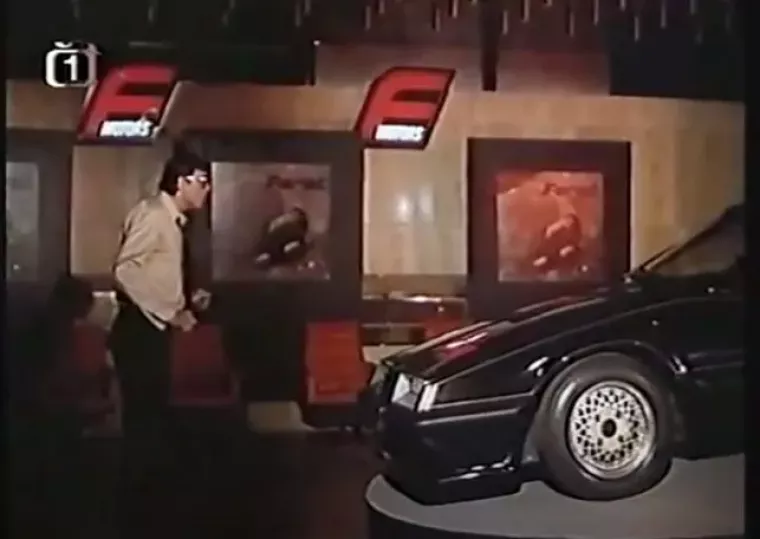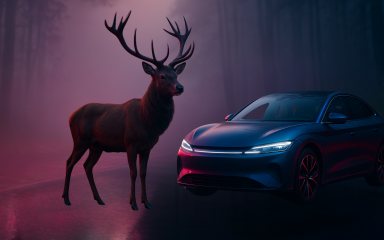
The idea that a car could play a role in a film as important as an actor may seem crazy at first. But if you think about it, you can come up with a few instances, and you don't have to limit yourself to animated Disney movies with Lightning McQueen. For example, would the Bullitt case work without the iconic green Mustang GT 390? Could the protagonists of Svěrák's Ride drive around South Bohemia in anything other than an old Mazda with the roof cut off? Cinema is full of similarly essential cars, and some of them have made a lasting mark on both film and motoring history.
Text: Jiří Holubec
Aston Martin DB5
It's pretty much impossible to write about cars in movies and not mention at least one of James Bond's cars. In the franchise's six decades of operation, Agent 007 has sat behind the wheel of many makes, from Alfa Romeo to VAZ. But none of his cars have become as iconic as the silver-grey Aston Martin DB5 that Bond got into in the very first film Goldfinger. The British beauty is a work of art in its own right. Add a ram in the bumper, machine guns, an ejector seat, smoke and oil spewers and a navigation system from Mechanic Q, put Sean Connery behind the wheel and you have an undying legend. It's a testament to the popularity of the adventure series that the demand for the DB5 has remained virtually unabated since the 1960s.
Pontiac Trans Am
Smokey and the Bandit is a lesser-known, but all the more essential film in which two drivers - Bandit (Burt Reynolds) and Snowman (Jerry Reed) - drive through the American highways with a load of contraband beer. While Snowman drives the truck, Bandit "clears" the way and distracts the police in a 1977 Pontiac Trans Am. The entire plot basically consists of one big car chase, with the black-and-gold Trans Am cutting corners, jumping over sunken bridges, and driving a sheriff named Buford T. Justice absolutely insane. The film was directed by stuntman and friend of Burt Reynolds Hal Needham (whose relationship, incidentally, led Quentin Tarantino to write the characters of Rick Dalton and Cliff Booth for his film Once Upon a Time in Hollywood).
Mustang GT 390
Movie fans often argue about the best car chase in the film history. Perhaps the biggest favorite is the twelve-minute scene from Bullitt when Detective Frank Bullitt chases the bad guy in his Mustang GT through the steep roads of San Francisco in a Dodge Charger. Of course, any car looks a lot better with Steve McQueen behind the wheel, but the GT 390 owes much of its rugged appeal to production improvisation. The filmmakers had two Mustangs at their disposal for the shoot, but they arrived from the dealer with different modifications. To make them indistinguishable in different shots, chief mechanic Max Balchowsky had to comb them literally to the bone.
Dodge Charger 1968–1970
In Bullitt, the Dodge Charger may have lost to the Mustang GT, but in real life the balance of power would probably have been reversed. Even in terms of cinematic notches, this American classic has the edge. He's had such iconic roles as "General Lee" from the cult 70s TV series The Dukes of Hazzard, co-starred with Peter Fonda in Dirty Mary Crazy Larry, and Quentin Tarantino put Kurt Russell in it in the trash car killer Death Proof. But the list of Charger's roles wouldn't be complete without the first installment of the endless Fast and the Furious franchise, where Vin Diesel burns the tires off Paul Walker's Toyota Supra while putting him "on the back".
Plymouth Fury 1958
If you're looking for a movie where the car literally plays one of the main roles (and Transformers seems silly) definitely reach for Christine. The movie is based on a Stephen King novel and Christine is not a girl, but an evil-spirit possessed Plymouth Fury. The premise may seem a little strange, but under the direction of horror master John Carpenter, the killer car on screen is truly terrifying. This is greatly aided by the practical special effects that allow Christine to regenerate herself after even the worst crashes.
Škoda 110 Super Sport
Since we touched on the horror genre, we can't help but mention one of the strangest films in Czech cinema. Based on a short story by Josef Nesvadba, The Vampire of Ferat was directed by Juraj Herz, with music composed by Petr Hapka and starring (will Jiří Menzel and Dagmar Veškrnová please forgive me) a Škoda 110 Super Sport prototype from Mladá Boleslav. Arguably the most beautiful Škoda in history, it caused a stir at the 1972 Brussels Motor Show, and the sports car with its futuristic tilting bonnet was of great interest both here and abroad. Naturally, the Communist planners decided to put it on ice, and the car still exists today in one single example.
Mustang Shelby GT500 1967
While Ferat drove his male and female drivers into sexual ecstasy, Eleanor aroused more complex emotions in them. The name first appeared in the 1974 cult film Gone in 60 Seconds, written, produced, directed, acted and directed by car mechanic, businessman and stuntman Henry "Toby" Halicki. The scenario is simple - in one day, the protagonist must steal 48 cars, including a super-powerful Ford Mustang nicknamed Eleanor. In a 40-minute chase through the streets of L.A., Halicki destroys nearly 100 cars (luckily he owns a wrecking yard and a towing service) and his own health. He seriously injured his spine in the final jump behind Eleanor's wheel and went permanently limp afterwards. During the filming of the sequel in 1989, an even more serious accident occurred, which unfortunately cost him his life.
Safety features
Whereas in the past, technicians had to reinforce and add safety features to cars for filming purposes, today they have exactly the opposite problems. Modern cars are so packed with safety measures that even the most self-aggressive stuntman can't do anything about them. When Marvel Studios filmed the car chase in Black Panther, Toyota had to send a corporate programmer along with the Lexus 500 F Sport to rewrite the on-board computer's security algorithms so the car could move a little for the camera. The same problem was solved by the production on the filming of Baby Driver. A Daimler programmer had to be called on set to disable the Mercedes S-Class' safety systems, not for the purpose of competing with the old Subaru WRX STi in the scenes, but so that Kevin Spacey could actually crash it into something.



